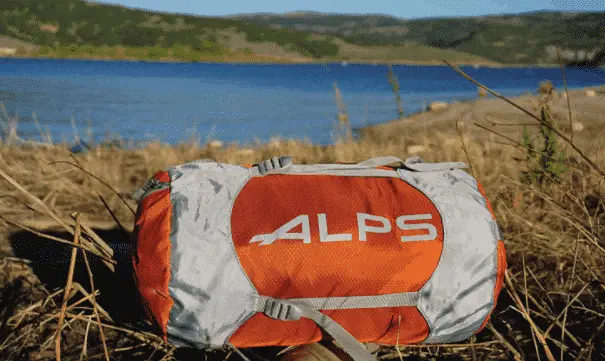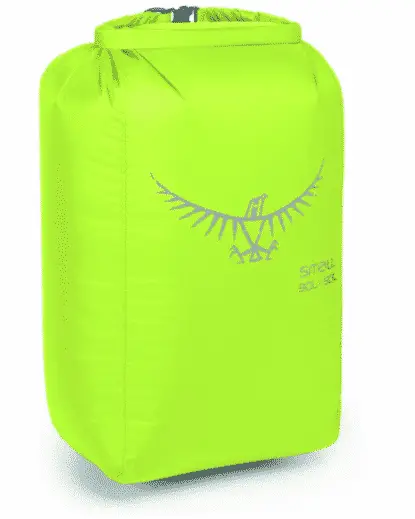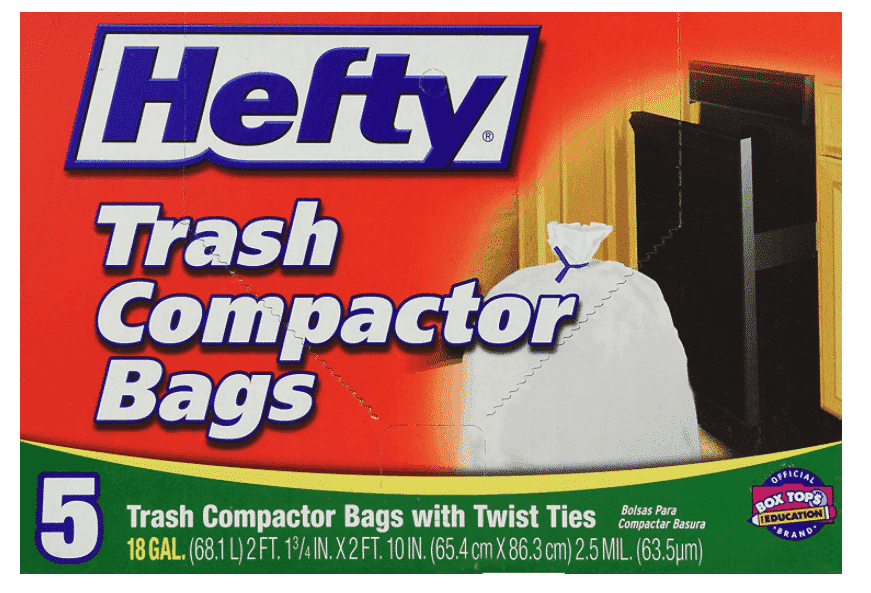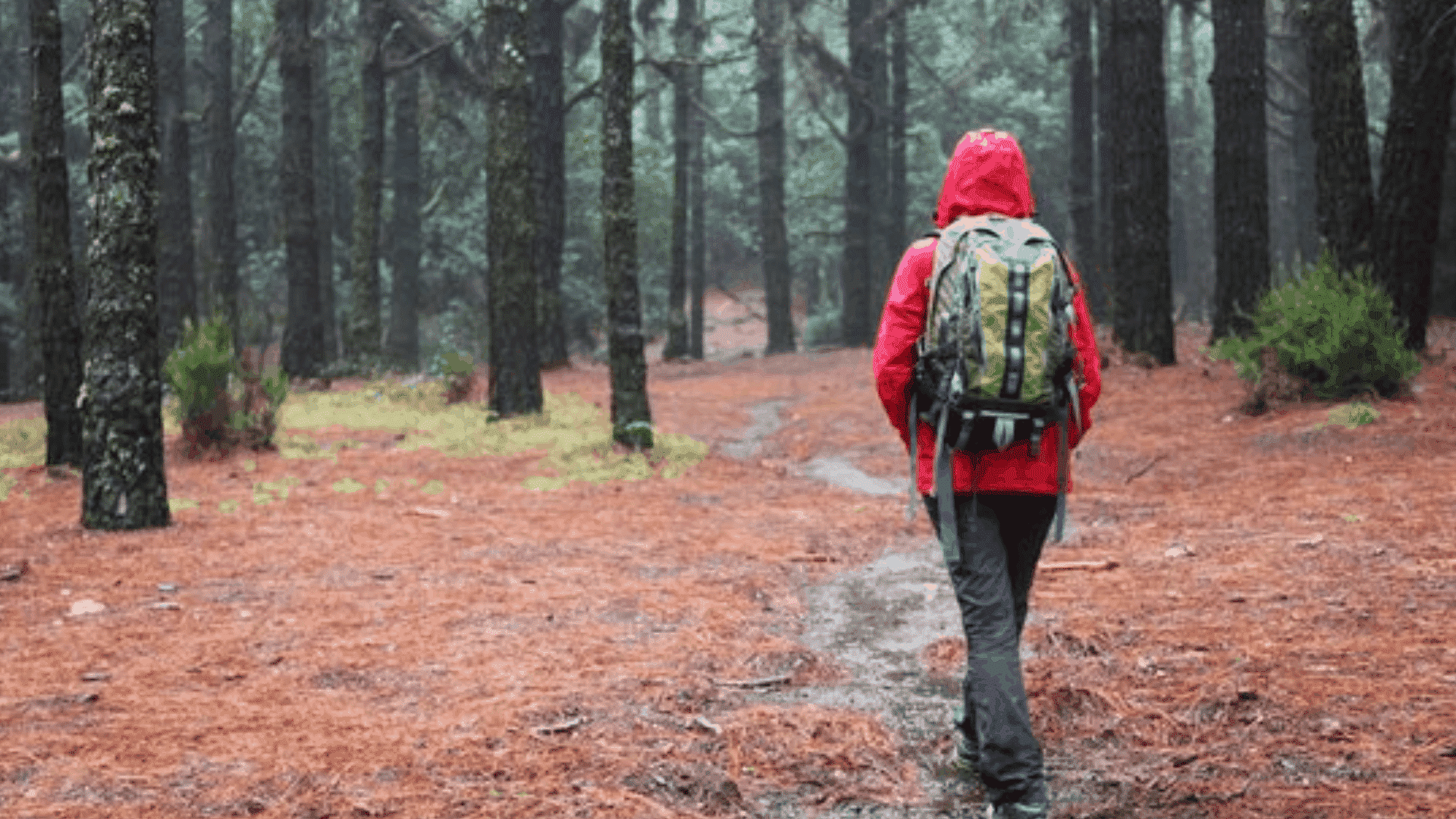After a long day on the trail the last thing you want to deal with is soaking wet gear. Having to put on soaking wet clothes at the end of a long hike really sucks. Rain covers just don’t seem to get the job done when the rain starts to pick up. Luckily with the use of a pack liner or dry bag you shouldn’t have to worry about soaking wet gear.
Table Of Contents
Do I Need to Use a Pack Liner or Dry Bag?
Personally, I don’t know how people backpack without using either a dry bag or pack liner. People do this for a wide variety of reasons, but it usually boils down to them being cheap, uninformed, reckless, or maybe they’re just trying to save a little bit of weight.
Regardless of the reason why you aren’t currently using a pack liner or dry sack, you need to start using one. You don’t even need to spend a lot of money on gear.
You Can’t Rely on a Pack Cover to Keep Gear Dry
Rain covers are better than nothing, but they’re basically worthless in heavy rain. The water runs down your shoulder straps/back and slowly soaks into your bag. If there’s even a slight chance of rain you need to come up with an alternate solution.
Luckily, you don’t have to spend a lot to keep your gear dry. Even cheap compactor bags (On Amazon) will get the job done. For a couple of dollars and a few oz it really doesn’t make sense not to use a pack liner.
Compactor bags only come in one size (18 Gallon) and are big enough for packs up to 65 Liters. If you want to use a bigger pack you can just fold the compactor bag down and place gear that doesn’t need to stay dry out side the bag.
Pack Liners vs Dry Bag
Personally, I prefer pack liners over dry bags, but I usually use a combination of both. You never know what’s going to happen out on the trail; I’ve taken more unexpected dips in water than I care to admit. Dry sacks just give you that little bit of extra protection for the most important gear in my pack.
At the very least, you’ll want to use small dry bags (these are great for the price) or ziplocks to keep your exterior pockets dry. With dry bags in your outside pockets and a pack liner for the inside, your gear should stay bone dry in even the worst storm.
Get a Waterproof Compression Sack

Even with a pack liner, I highly recommend purchasing a waterproof compression sack (my favorite) to store your sleeping bag. I was surprised to learn that not everybody uses a compression stuff sack for their sleeping bag.
Not only are most compression sacks waterproof, they also compress your sleeping bag, clothes, towels, etc into about 50% of their original size. You might add a little weight to your pack, but you can get buy with a much smaller backpack since your gear is compressed.
Pack Liners

Pack liners are by far the easiest, cheapest and best way to keep the gear in your pack dry. When used properly, they keep every single thing in your pack dry.
Just make sure you remember to use ziplock or dry bags in your external pockets. A few years ago I might have destroyed my iPhone 6 a few years ago after forgetting it was in my exterior pocket.
That resulted in a few frantic calls from my girlfriend for not checking in and nice scolding when I got home. Now I use cheap 2-4 liter dry bags (On Amazon) in all my exterior pockets regardless of the weather.
Advantages and Disadvantages
By far the best thing about pack liners is everything in your pack will stay dry. Since it lines the entire inside of your pack only the outside fabric on your pack will get wet. When the sun comes back out your pack will dry in no time.
Although pack liners protect everything in your pack they do occasionally leak. You need to minimize the amount of pointy objects in your pack and wrap gear that could puncture the liner. Also be mindful of what’s in your exterior pockets since they aren’t protected.
Just Use a Compactor Bag

Throughout the years I’ve tried more commercial pack liners than I can remember. I really like my Osprey Ultralight Pack Liner that I got for christmas, but is it better than a plain old compactor bag?
Compactor bags, that you can get at the grocery store (or Amazon), work just as well as any commercial pack liner. They aren’t as pretty and you need to replace them between trips, but they work just as well on short trips. If you end up with a hole just replace the bag or patch it up with a little duct tape.
On trips that are 1 week or longer you might want to use a real pack liner, but they aren’t always necessary. A friend of mine, that completed a successful thru-hike of the Appalachian trail, only uses a compactor bag to line his sack.
Dry Bags
Although most hikers/backpackers prefer pack liners, dry bags definitely have their cheerleaders. All it takes is one bad experience with a pack liner to turn people against them. Honestly, I can’t blame them! Sleeping in a soaking wet sleeping bag is terrible.
Advantages and Disadvantages
A dry bag isn’t going to protect everything, but it does guarantee everything that’s important stays dry. You don’t have to worry about leaks, replacing compression sacks, and they separate your gear.
It’s also nice to be able to separate your gear by using multiple small bags. With color coated bags you can separate clothes, sleeping gear/pyjamas, etc giving you quick access. You shouldn’t have to dig around a massive bag to find a light jacket when it gets cold.
The only real downsides to using dry bags are price, weight and the fact that not everything stays dry. Do you really need to keep your camp stove, tent, poles, guylines, etc dry? Probably not so this isn’t that big of a deal.
Dry bags do add a few ozs of extra weight, but whether or not that’s a big deal is up to you. The added weight shouldn’t make much of a difference unless you’re seriously trying to cut pack weight.
Gallon Ziplocks For Small Items
Instead of buying dry bags you might want to consider just using a few Gallon Ziplock bags to keep your most important stuff dry. You can fit a shirt, socks, underwear, and gym shorts in a single Gallon Sized Ziplock bag.
A few Ziplock bags for clothes,electronics, first aid, and other important items is all you really need when combined with a pack liner. You still might want to use a waterproof compression sack or additional garbage bag to protect your sleeping bag.
Why Don’t You Use Both a Pack Liner and Dry Bags?
You might as well have a little bit of redundancy and use both pack liners and dry bags. Other than a slight increase in weight/cost there’s really no downside to using both.
I use an Osprey Liner (compactor bag works too) to keep the majority of my gear dry, small dry bags in exterior pockets, clothes in a waterproof stuff sack, and sleep system/pajamas go in a compression sack.
This is just what works for me. Start out with a cheap compactor bag liner, and slowly buy additional dry bags as you go along. What you choose to do is entirely up to you.



